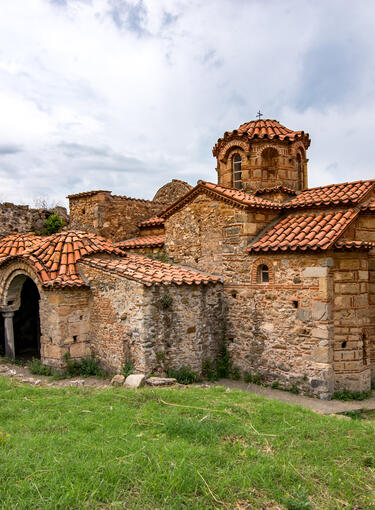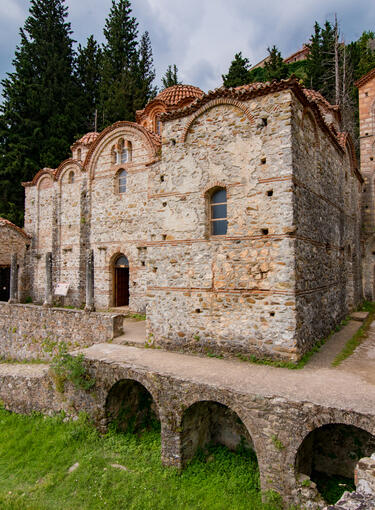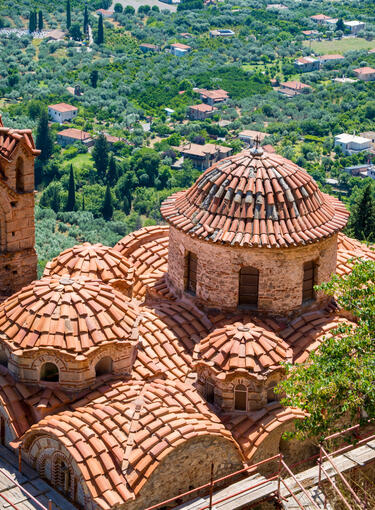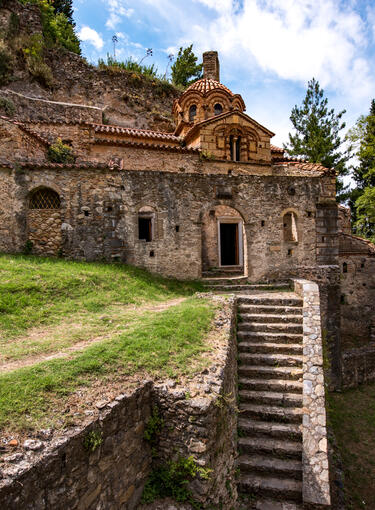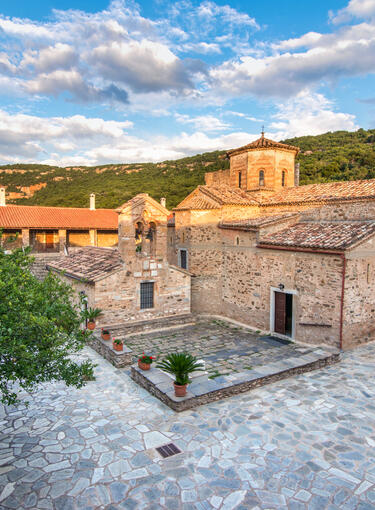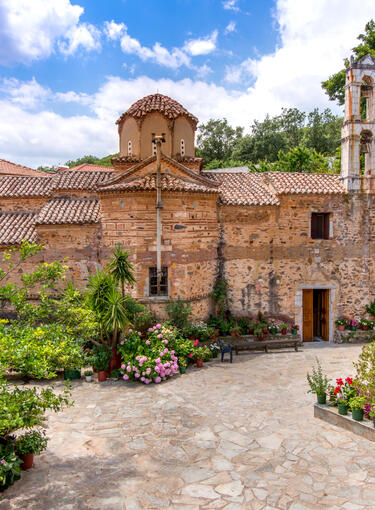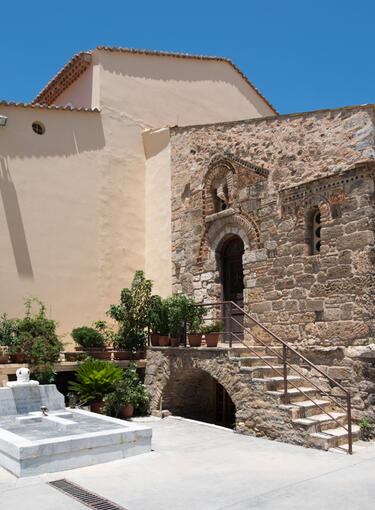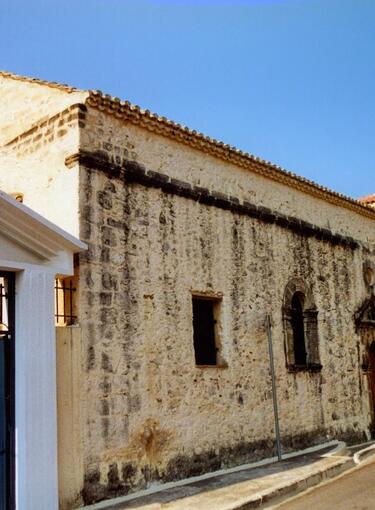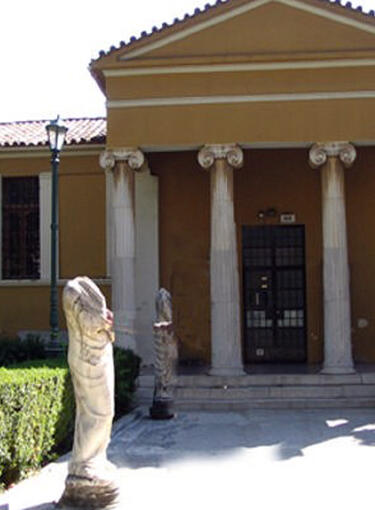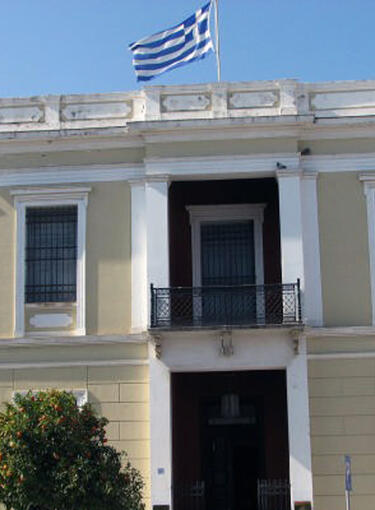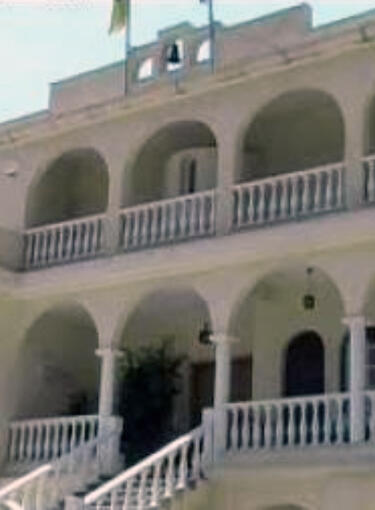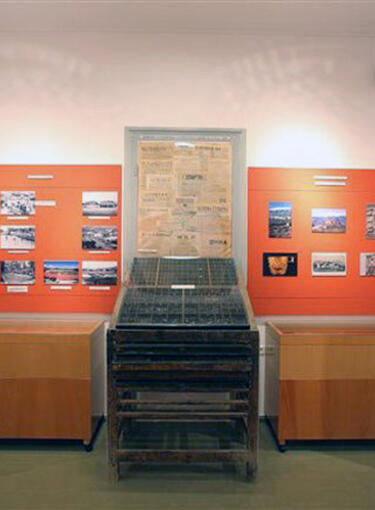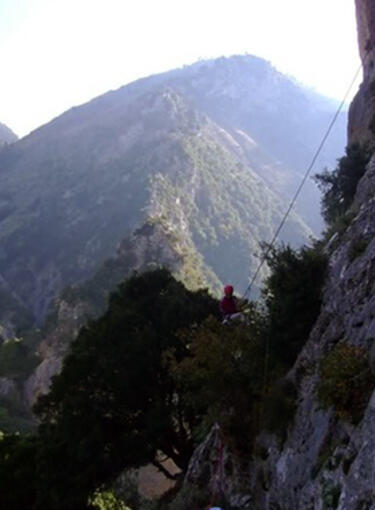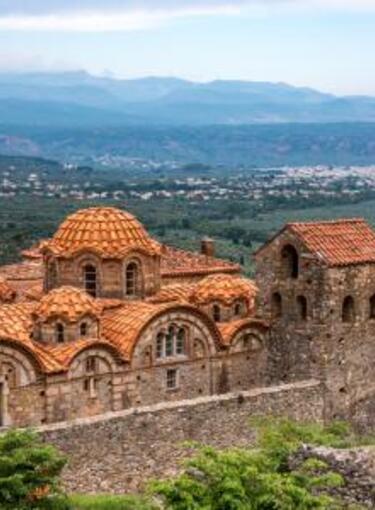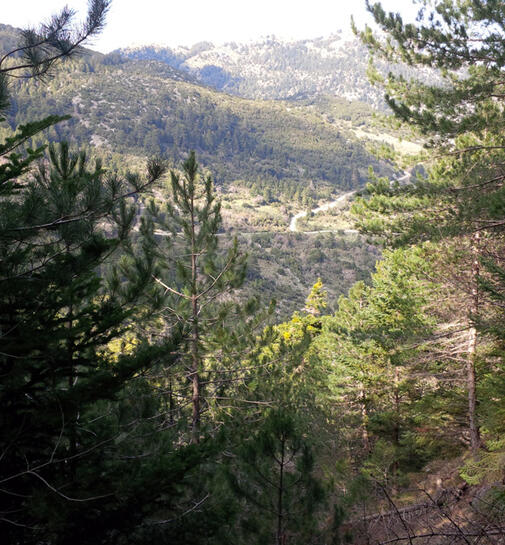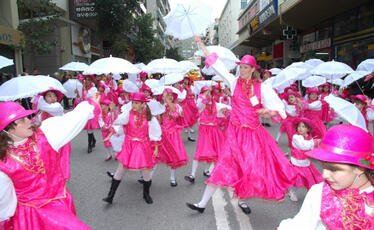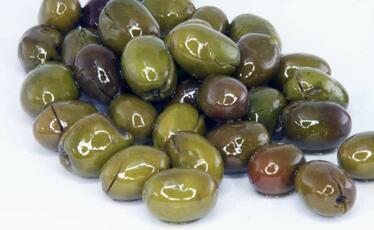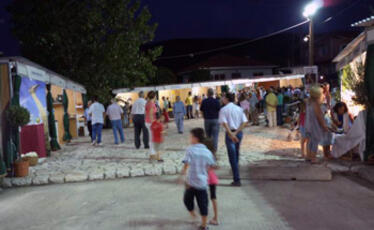The Ano Poli of Mystras, at the area of the palace, just higher of the square, is built the church of Agia Sophia, the only one of the district that was used as a church of the palace.
It was constructed in the 14th century by the first despot of Mystras, Manuel Kantakouzenos, whose monograms survive on the marble members of the church. According to an inscription, which does not survive together, but has been copied in the 18th century, in front of the gates of the church the parents of the despot were painted, emperor John VI Kantakouzenos and his wife Irene Asanina. The church was initially dedicated to Life-giving Christ and was the catholicon of the men’s monastery with the same name, as it is evident from the sigil of the patriarch of Constantinople Philotheos, in 1365, with which they converted it to a monastery after a request from the founder himself. According to the sources, to the monastery they transferred, after 1429, the bones of Theodora Tocco, the wife of Constantine XI Palaiologos, while it was here that they buried in 1433 Cleopa Malatesta, the wife of the despot Theodoros II Palaiologos. The fact that they renamed the church into Agia Sophia must have been made after the Fall of Constantinople.
The initial church was a two-columned, cross-in-square one, where they later added a spacious narthex with a dome, chapels, a bell tower and porticos. The church is largely built according to the common in southern Greece cloisonné masonry. At its interior there are fragments of the painting decoration, which date from the period 1348-1354. Among the representation particular interest has the depiction of Christ enthroned at the conch of the bema. The wall paintings of the chapels are made at a somewhat later date. The carefully done decoration of the church is complimented by opus sectile and the architrave of the screen, which dates from the end of the 12th century and comes from an older monument.
Informations
Additional
Date:
14th century
Season:
Byzantine
Holy Metropolis:
Monemvasia and Sparta
Under the Supervision of:
Ephorate of Antiquities of Laconia
Address:
Ano Poli








